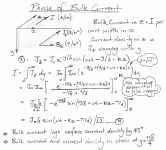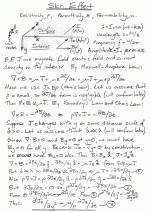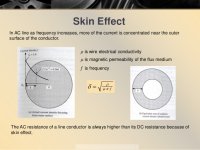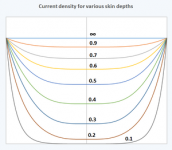The fact that you got to put in all the fun bits and bobs (resistors, capacitors, input transistors, # of output transistors, heft of PSU, internal wire and connections) that might marginally benefit the topology but certainly make you happier with the design?
I'm saying that without being cynical--it's going to be hard to materially change the transfer function of the amp without changing the circuit design/layout.
I'm saying that without being cynical--it's going to be hard to materially change the transfer function of the amp without changing the circuit design/layout.
Market positioning.
In all seriousness, that is the correct answer (John, listen carefully to this stuff, it is important).
Some may recall the Ken Ishiwata [sp?] tuned CD players from Marantz. These were fundamentally stock CD players which were then tuned up with copper screen cans, better caps etc. The players were marked as 'KI' and marketed as such.
This allowed them to sell these at a premium.
John, you have a brand name which is highly unusual for a designer in the audio business. The value of your amps is not in the spec. It comes from the John Curl moniker.
Nothing to do with huckstering or b.s. - just marketing 101.
Some may recall the Ken Ishiwata [sp?] tuned CD players from Marantz. These were fundamentally stock CD players which were then tuned up with copper screen cans, better caps etc. The players were marked as 'KI' and marketed as such.
A friend had both (the stock and the KI).
I took them home and listened extensively. No difference to me.
No difference at the bench too.
The B maybe with the stock chassis.
The A with the milled aerospace grade aluminum facia.
George
just some comments on skin effect...... I asked if there was a phase componenet at various depths... I couldnt find an answer here. But I did find the answer and it is what i suspected. yes, there is a phase effect with the skin effect. Not too surprising for an equiv RL circuit.


There is also a GD effect as well not shown -- later.


In regard to my including audio freqs with skin effect.... it takes about 4 skin depths to contain 98% of the signal.
THx-RNMarsh


There is also a GD effect as well not shown -- later.


In regard to my including audio freqs with skin effect.... it takes about 4 skin depths to contain 98% of the signal.
THx-RNMarsh
Last edited:
Market positioning does come into it at the very beginning. Sometimes I am asked to do something that is cost conscious. That would be the A21, A23 today, and the HCA2200, HCA1000, and the HCA1200 in the past.
Parasound never made an 'A' product until the Parasound JC-1 power amp, AND it is a lot more expensive to make and it sells for a heck of a lot more too!
The differences are in several areas: Layout, and parts quality, and usually the heatsink size. The front panels usually look about the same (except for size). The specs won't be much different, except for rated power into 4 ohms, but VIVA the difference. It is like the difference between a hi end VW and a Porsche. Yes, there is a difference in price and performance, but it is not worth the cost difference to everybody. Just people who care a bit more about the product performance in the best testing (listening) conditions, e.g. the best loudspeakers, sources, etc, or a twisty back road for an auto.
Parasound never made an 'A' product until the Parasound JC-1 power amp, AND it is a lot more expensive to make and it sells for a heck of a lot more too!
The differences are in several areas: Layout, and parts quality, and usually the heatsink size. The front panels usually look about the same (except for size). The specs won't be much different, except for rated power into 4 ohms, but VIVA the difference. It is like the difference between a hi end VW and a Porsche. Yes, there is a difference in price and performance, but it is not worth the cost difference to everybody. Just people who care a bit more about the product performance in the best testing (listening) conditions, e.g. the best loudspeakers, sources, etc, or a twisty back road for an auto.
<snip>
I'm saying that without being cynical--it's going to be hard to materially change the transfer function of the amp without changing the circuit design/layout.
Why should that be?
In fact, it is quite hard to change parts/materials without changing the transfer function, but it is quite easy to argue that it can´t made a perceivable difference.
Just to spoil the party, we did 30 years ago controlled listening tests with film capacitors with different materials as coupling parts between high gain stages and could confirm our impressions from "sigthed listening" in controlled listening tests.
Jacob, let's use this example, as it's probably one of the places that might have the greatest change: switch a good, industrial bipolar electrolytic coupling cap for a "fancy" film and foil (again, of industrial manufacture as opposed to bespoke) of the same capacitance, and tell me that the transfer function changes materially. If you nulled your two amplifiers, how many dB down is that change? This is just common sense stuff!
(It might change some, but I'm betting it's a lot more to do with layout parasitics, and/or gain mismatch!)
(It might change some, but I'm betting it's a lot more to do with layout parasitics, and/or gain mismatch!)
Jacob, let's use this example, as it's probably one of the places that might have the greatest change: switch a good, industrial bipolar electrolytic coupling cap for a "fancy" film and foil (again, of industrial manufacture as opposed to bespoke) of the same capacitance, and tell me that the transfer function changes materially. If you nulled your two amplifiers, how many dB down is that change? This is just common sense stuff!
(It might change some, but I'm betting it's a lot more to do with layout parasitics, and/or gain mismatch!)
All you need to test your theory is 10 capacitors of each type of the same value. I suspect there will be an easily measurable difference.
Ed, how many dB down? Of course I expect differences, primarily in actual capacitance.
There's been enough ink spilled here.
There's been enough ink spilled here.
This is why Scott should stick with a standard 1200 and not heavily modify it. The return is not in the usual measurements. A forgiving loudspeaker like Scott and I use (for general use) will hide any differences anyway.
The context of SY's remark was (EDIT: in 86303), however, the reliability of aural memory for level differences separated by a time interval.
I beg to differ; John Curl posted something about comparing the sound of a phono stage to his memory of different amplifier he had heard in the past. SY provided a very questionable example (level differences) to back up his assertion.....
Despite the fact that in very-short-term comparisons we are usually very good at noticing level changes, with sufficient time between comparisons we are probably pretty lousy.
By the way; citations of studies that examined the relationship between degree of a difference and chance to memorize it, are still lacking.
Level differences between sound samples are a questionable example because long term storage depends on the chance to categorize informations. If the level difference will be perceived as such (just a level difference) then it will be difficult to remember after some time, but if it will be perceived as a sonic difference chance are much higher to remember the difference even after some prolonged pause.
Secondly it depends on the memory model one assumes to be correct. What i´ve written above relies on the more traditional model of sensory memory (in this case the echoic memory), short term memory and long term memory.
Another more recently used model would rely on the concept of working memory in which information is stored for some time (time span differs widely between publications) if used for processing information.
Anyway it is granted that for most humans memory will not be perfect in every detail (although some exepctions exists) but can be nearly perfect in some details. Afair ( 🙂 ) training does help a lot (and that includes to know what to listen for).
Last edited:
Memory is subject to the same basic bias and preconception as anything related to perception.
The test comes to mind where witnesses of accidents were later asked about the color of the ambulance at the scene.
I may not remember ;-) the exact numbers but it was like 45% said red, 45% said yellow, and only 10% had it right: there had not been any ambulance at the scene.
So much for that great memory of ours.
Jan
The test comes to mind where witnesses of accidents were later asked about the color of the ambulance at the scene.
I may not remember ;-) the exact numbers but it was like 45% said red, 45% said yellow, and only 10% had it right: there had not been any ambulance at the scene.
So much for that great memory of ours.
Jan
This level differnce is thrown up a lot and is often used out of the context to which research reported lowest detectable differences (varies with FR Q). Never-the-less, it is not important to some aspects of sound reproduction..... a 'slight' difference does not matter IMExperience for determining imaging, details and many aspects of the reproduced sound.
Hey! Care to look at near as we can get to perfect circuit using my favorite - CFA? See the topology and results of a line level, Headphone Amplifier by arpagon. [Waly, don't look]
THx-RNMarsh
Hey! Care to look at near as we can get to perfect circuit using my favorite - CFA? See the topology and results of a line level, Headphone Amplifier by arpagon. [Waly, don't look]
THx-RNMarsh
Jacob, let's use this example, as it's probably one of the places that might have the greatest change: switch a good, industrial bipolar electrolytic coupling cap for a "fancy" film and foil (again, of industrial manufacture as opposed to bespoke) of the same capacitance, and tell me that the transfer function changes materially. If you nulled your two amplifiers, how many dB down is that change? This is just common sense stuff!
(It might change some, but I'm betting it's a lot more to do with layout parasitics, and/or gain mismatch!)
I am again puzzled. Why should we now talk about a "bipolar vs. fancy film" ?
We used "non fancy film" vs. another "non fancy film" which means exactly (polyester film vs. polypropylen) both from "normal" manufacturers (Wima and Siemens). Comparable size, nearly identical grid dimension, measured tolerance < 1-2% .
We did not use two amplifiers, just the same instead and changed the capacitor (or did not change it), listener had to deliver positive identification for success.
Given your speculation "parasitics and/or gain mismatch" is true; if it is effectuated by capacitor exchanges, in which theoretical framework would it not qualify as a modification of the transfer function?
Last edited:
Jacob, I was making as large an example of swapping components essentially 1:1 as I could.
Nothing about your test seems remotely robust, both in prior plausibility and in execution. Let me rephrase and see if I missed anything: there's a claim about swapping between two industrial capacitors of reputable quality (one polypropylene and the other polystyrene), and of (hopefully) similar capacitance and parasitics on a single amplifier (thus relying on long term memory) having (expected) differences? Sheesh, that reads like a fishing expedition for results.
Again, I want to emphasize, whatever anyone wants to do is all well and good, but, for goodness sake if you're going to do an experiment to determine X from Y for whatever reason, don't do garbage tests.
Nothing about your test seems remotely robust, both in prior plausibility and in execution. Let me rephrase and see if I missed anything: there's a claim about swapping between two industrial capacitors of reputable quality (one polypropylene and the other polystyrene), and of (hopefully) similar capacitance and parasitics on a single amplifier (thus relying on long term memory) having (expected) differences? Sheesh, that reads like a fishing expedition for results.
Again, I want to emphasize, whatever anyone wants to do is all well and good, but, for goodness sake if you're going to do an experiment to determine X from Y for whatever reason, don't do garbage tests.
Ed, how many dB down? Of course I expect differences, primarily in actual capacitance.
There's been enough ink spilled here.
Never done the comparison. I suspect that under certain conditions capacitors can color the sound. I do use them when required.
In my 10 watt class a minimalist amplifier using 300 uF film capacitors across the rails does make a difference. Built some both ways and folks who didn't know thought the electrolytic version was broken. That did surprise me, but once you know what to listen for the difference shows up for most folks who got the demo.
folks who didn't know thought the electrolytic version was broken. .
Maybe it was.
If I may gather the tea leaves, methinks he's suggesting (and in my total agreement) that the enjoyment factor of one's system* supercedes one's "status" wrt hi-fi, mid-fi, being in the game, etc. If the neighbor down the street with his $15 ghetto blaster enjoys his rig, who am I to object?
That's why we do this stuff, right?
Exactly. As I have already mentioned my best upgrade was someone to enjoy listening to music with. Encouragement to upgrade is also a plus compared to wife 1.0, so I have been able to rekindle the hobby I parked 20 years ago . The biggest plus is my music collection is now growing again at a decent rate. The more music I have the less I care about absolute fidelity anyway. Won't stop me upgrading though 🙂
- Status
- Not open for further replies.
- Home
- Member Areas
- The Lounge
- John Curl's Blowtorch preamplifier part II